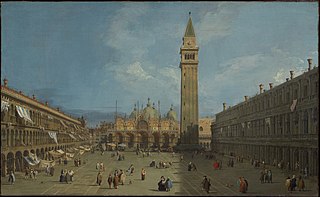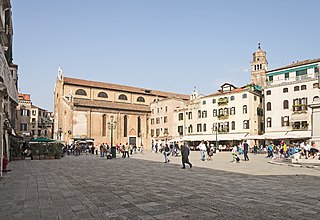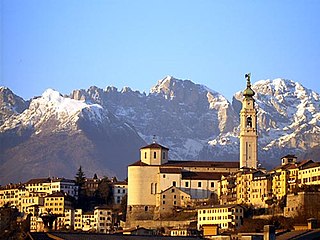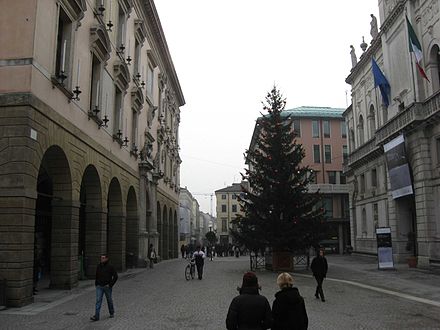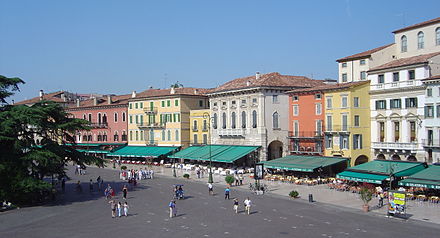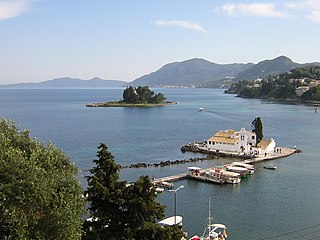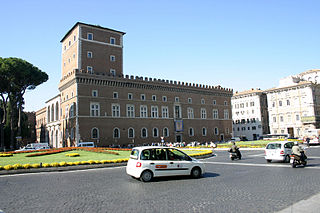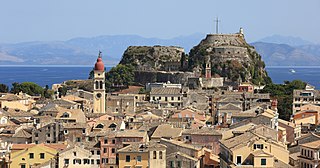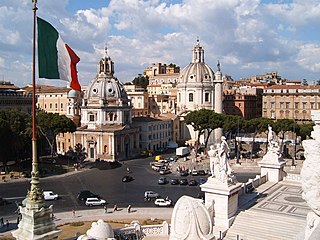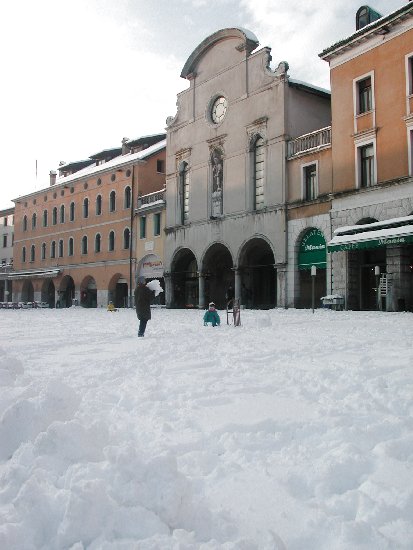
Liston is a Venetian word used in various cities of the Veneto region and former possessions of the former Republic of Venice to indicate a part of the city, usually a square or section of a square. The term liston refers to the long marble slabs used for paving the streets. The term far el liston, means "to walk around the square".

Veneto is one of the 20 regions of Italy. Its population is about five million, ranking fifth in Italy. The region's capital is Venice.

The Republic of Venice or Venetian Republic, traditionally known as La Serenissima was a sovereign state and maritime republic in northeastern Italy, which existed for over a millennium between the 7th century and the 18th century from 697 AD until 1797 AD. It was based in the lagoon communities of the historically prosperous city of Venice, and was a leading European economic and trading power during the Middle Ages and the Renaissance.
Contents
Several cities in the Veneto have a liston. In Venice it is the name of the walk from St. Mark's Square past the columns of Marco and Todaro. In Verona it is the west side of Piazza Bra. In Padua it is part of the Prato della Valle. In Belluno the liston is in Martyrs' Square (also known as the "Campedel"). In Rovigo it is the central part of the Piazza Vittorio Emanuele II. In Trieste, which has strong ties with Venetian culture, it is called the Corso Italia. In the Greek island of Corfu the locals still use the word to indicate the main promenade of Corfu city.

Venice is a city in northeastern Italy and the capital of the Veneto region. It is situated on a group of 118 small islands that are separated by canals and linked by over 400 bridges. The islands are located in the shallow Venetian Lagoon, an enclosed bay that lies between the mouths of the Po and the Piave rivers. In 2018, 260,897 people resided in the Comune di Venezia, of whom around 55,000 live in the historical city of Venice. Together with Padua and Treviso, the city is included in the Padua-Treviso-Venice Metropolitan Area (PATREVE), which is considered a statistical metropolitan area, with a total population of 2.6 million.

Verona is a city on the Adige river in Veneto, Italy, with 258,108 inhabitants. It is one of the seven provincial capitals of the region. It is the second largest city municipality in the region and the third largest in northeast Italy. The metropolitan area of Verona covers an area of 1,426 km2 (550.58 sq mi) and has a population of 714,274 inhabitants. It is one of the main tourist destinations in northern Italy, because of its artistic heritage and several annual fairs, shows, and operas, such as the lyrical season in the Arena, the ancient amphitheater built by the Romans.

Piazza Bra, often shortened to Bra, is the largest piazza in Verona, Italy, with some claims that it is the largest in the country. The piazza is lined with numerous cafés and restaurants, along with several notable buildings. The Verona Arena, originally an amphitheatre built nearly 2000 years ago, is now a world-famous music venue with regular operatic and contemporary music performances. Verona's town hall, the Palazzo Barbieri, also looks out across the piazza.

